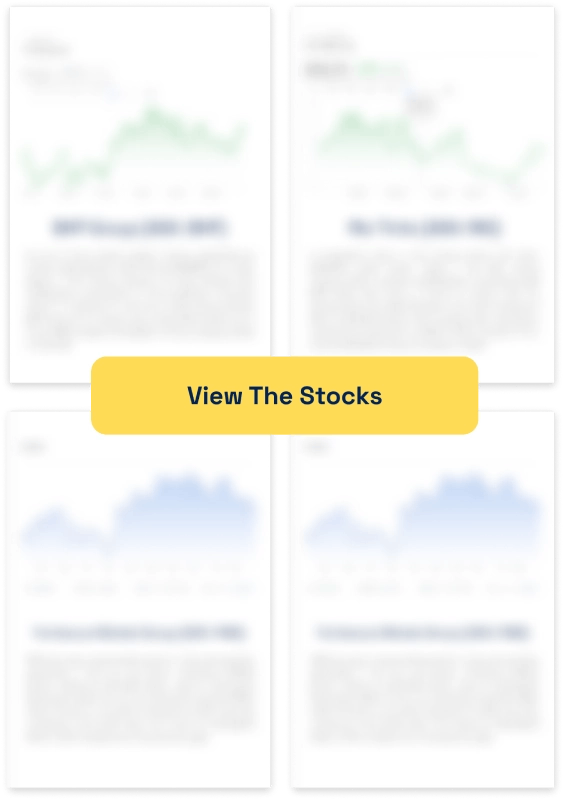ASX CEOs: Here’s 4 creative ways through which they are compensated
![]() Nick Sundich, June 22, 2023
Nick Sundich, June 22, 2023
ASX CEOs are paid an average of $1.1m a year.
But not all of their pay is in cash – there are several ways in which they may be compensated beyond a base salary. That may well be known, but how specifically they are compensated can be more of a mystery.
Yes, it is disclosed to investors (and it has to be), but investors may not understand how exactly they are paid. So this article has outlined 3 of the most common options employed by companies so you don’t have to.
Do you need solid trading & investment ideas on the ASX? Stocks Down Under Concierge can help!
Concierge is a service that gives you timely BUY and SELL alerts on ASX-listed stocks – with price targets, buy ranges, stop loss levels and Sell alerts too. We only send out alerts on very high conviction stocks following substantial due diligence and our stop loss recommendations limit downside risks to individual stocks and maximise total returns.
Concierge is outperforming the market by a significant margin!
GET A 14-DAY FREE TRIAL TO CONCIERGE TODAY
4 ways ASX CEOs are paid other than base salaries
1. Bonuses
CEO bonuses are typically structured to incentivize executives to reach certain goals and objectives that align with the company’s long-term interests. Bonuses can be performance-based, meaning they are tied to a metric such as sales targets, revenue growth, or profitability. Another type of bonus is a stock option, which gives the executive an opportunity to benefit from the appreciation in value of the company’s stocks over time. In some cases, the CEO may receive bonuses related to specific goals or accomplishments such as launching a new product line successfully or entering into a lucrative new market.
The size of CEO bonuses can vary significantly depending on the company and industry, but often times it is proportional to annual salary. Generally speaking, large public companies tend to offer very generous compensation packages for their executives compared to smaller private firms. Moreover, many companies also establish strict criteria and benchmarks that must be met before any incentives are granted; this helps ensure that compensation is properly aligned with executive performance and organizational outcomes.
2. Superannuation
Yes this is obvious, but it is still a part of their compensation.
Furthermore, specific employment contracts between the CEO and their company may provide for a higher rate than the statutory rate.
Given that superannuation contributions are taxed lower, there is incentive for CEOs to defer it to their superannuation – especially if they are approaching retirement.
3. Stock options
As we wrote about earlier this week, stock options give you the right to buy or sell shares of a company’s stock at a certain price. Generally, when you exercise an option you are buying (or selling) the underlying stock at the strike price, which is pre-determined by a contract. An option gives shareholders the right to purchase (or sell) shares of stocks in a predetermined time frame once that option is exercised.
CEOs may be granted options as part of their compensation and it is a no-lose situation, in theory. If and when they are exercised, the company will get money because it is fresh capital being raised – albeit not as much if the exercise price as the same as the share price at the time of vesting.
The CEO will enjoy extra remuneration that hasn’t costed the company extra cash to issue and is incentivised to steer the company well so that they can realise the potential capital gains.
4. Issuing shares
Sometimes a company may just compensate its CEO with shares outright.
A company may pay its CEO in company shares for a variety of reasons. Firstly, providing the CEO with shares in the company can give them an incentive to help increase the company’s value and profitability. As the CEO increases the value of the company, their own shareholding will grow in value alongside it. This encourages them to work hard to build a successful business.
Secondly, when CEOs are given stock options they become more closely aligned with shareholders’ interests since their financial interests are tied to those of investors. This means that decisions taken by management are more likely to be beneficial for shareholders as well as other stakeholders within the business.
And as it goes without saying, paying CEOs in company shares is often much cheaper than paying large salaries or bonuses out of cash flow, especially for smaller companies with limited budgets. This can mean that more of the company’s resources can be invested back into expanding operations, building infrastructure and hiring additional staff which will all contribute to increased value and profit growth over time.
What are the Best ASX Stocks to invest in right now?
Check our buy/sell tips on the top Stocks in ASX
A case study
Arguably the most famous ASX CEO is Alan Joyce, the boss of Qantas (ASX:QAN). In FY23, he will receive a base salary of $2.2m. His short-term bonus is also $2.2m but could be as high as $4.3m.
Under the 2022-23 Recovery Retention Plan, he will receive 698,000 shares that vest on June 30 2023, plus another 1,349,000 shares under the 2021-23 long-term investing scheme.
Half of those shares are based on Qantas’ total shareholder returns versus the ASX 100 while the other half are based on Qantas’ TSR versus a basket of global airline peers. If Qantas is in the top quarter, Joyce gets the full allocation. If Qantas ranks merely in the second quartile, he gets half the allocation.
Those outcomes would represent realised pay of $15.5-$17.6m, only $2.2m of which (12-14%) would be base salary.
So clearly you can see non-cash compensation is a crucial part of CEO compensation.
Stocks Down Under Concierge is here to help you pick winning stocks!
The team at Stocks Down Under have been in the markets since the mid-90s and we have gone through many ups and downs. We have written about every sector!
Our Concierge BUY and SELL service picks the best stocks on ASX. We won’t just tell you what to buy – we give you a buy range, price target, a stop loss level in order to maximise total returns and (of course) we tell you when to sell. And we will only recommend very high conviction stocks where substantial due diligence has been conducted.
Our performance is well ahead of the ASX200 and All Ords.
You can try out Concierge for 14 days … for FREE.
GET A 14-DAY FREE TRIAL TO CONCIERGE TODAY
There’s no credit card needed – the trial expires automatically.

Blog Categories
Get Our Top 5 ASX Stocks for FY25
Recent Posts
Kamala Harris stocks: If Joe Biden’s VP wins the White House in 2024, which stocks will win?
With the US Presidential election now certain to be a Kamala Harris v Donald Trump showdown, we’ve looked at so-called…
South32 (ASX:S32): Is it the dark horse amongst ASX 200 miners or have cyclones and commodity prices hit it too hard?
South32 (ASX:S32) began life as a spinoff from BHP back in 2015, capitalised at $9bn. In mid-2024, it is capped…
Here’s why drug reimbursement is so important for ASX healthcare stocks
Let’s take a look at the concept of drug reimbursement, something that is crucial for ASX healthcare stocks looking to…




